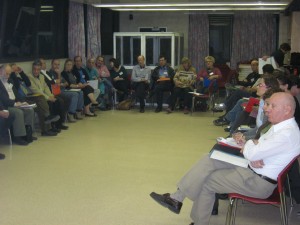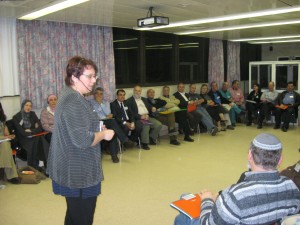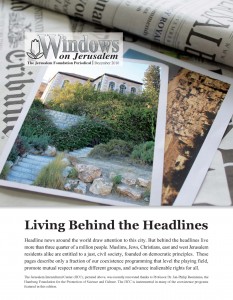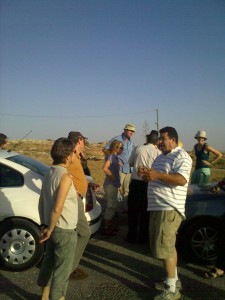Cultural Competence in Hadassah Mount Scopus – Free Interpretation Service for Patients and more
Please see the Hadassah Medical Center press release from today:
17/03/2011
Free Translation Service for Hadassah’s Patients
For the past few months, Arabic and Russian-speaking patients at Hadassah-Mt. Scopus have been able to avail themselves of a free and professional translation service, thanks to the collaboration between the Hadassah Medical Organization, the Jerusalem Foundation, the Jerusalem Intercultural Center and volunteers from the community.
Research has shown that a language barrier between a patient and a physician often impedes care and treatment – the physician does not fully understand the patient’s complaints and the patient does not fully understand the treatment guidelines.
A generous donation from the Jerusalem Foundation enabled the establishment of B’sfatcha Center (In Your Language Center). Prof. Leon Epstein, Director Emeritus of the Hadassah-Hebrew University Braun School of Public Health, initiated the project, which is headed by Gila Segev of Hadassah’s Department of Social Services, and staffed by 30 trained volunteer medical translators.
A similar service will be soon been established at Hadassah-Ein Kerem.
Indeed, in September Hadassah Mount Scopus began training Arab and Russian-speaking volunteers to become medical interpreters. The JICC provided the volunteers with a 5-day medical interpretation course and helped in recruiting the volunteers and in establishing the service, together with the dedicated staff of the hospital. To date, there are 34 volunteer interpreters who are available for daytime rotations. The interpreters serve in the gynecology, emergency and internal medicine departments, where they are most needed, but can be requested by telephone to help out in any area of the hospital. In November, the first month the interpreters were made available at Hadassah, there were 83 requests for their services. By January the number had risen to 121. In the beginning of February the total number of requests reached 300.
Hadassah created a wonderful clip about the service (in Hebrew only):
Original at:http://youtu.be/RB8gHYG8W6M
Version with English subtitles (thanks to the Jerusalem Foundation):
Original at: http://youtu.be/yecOi2BiDjE
At the same time, we provided training workshops to around 80 hospital staff members about the uses and capabilities of these interpreters, as well as about principles and practical tools of cultural competence.




